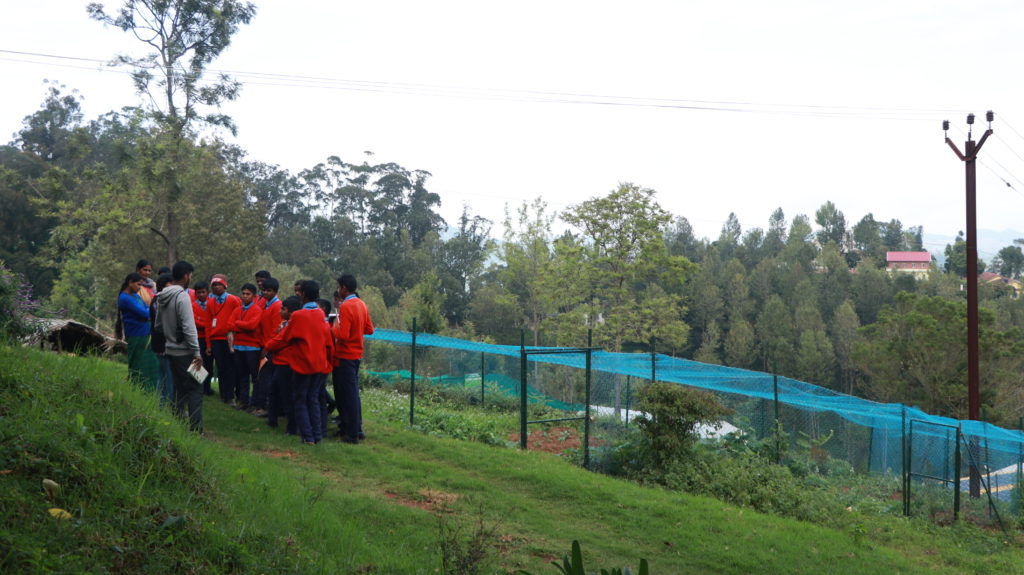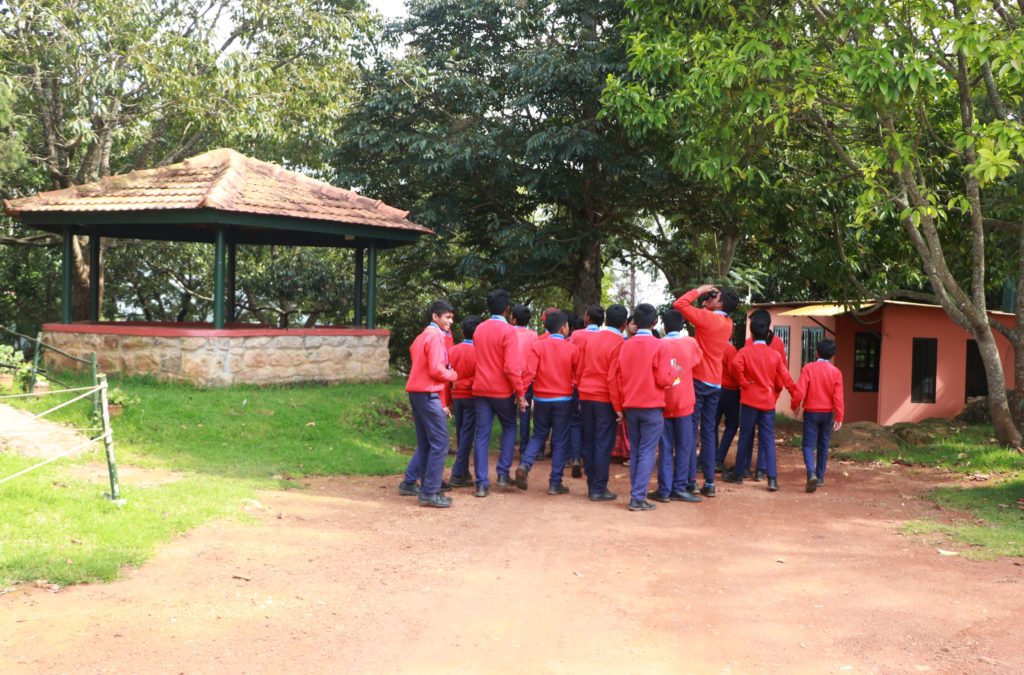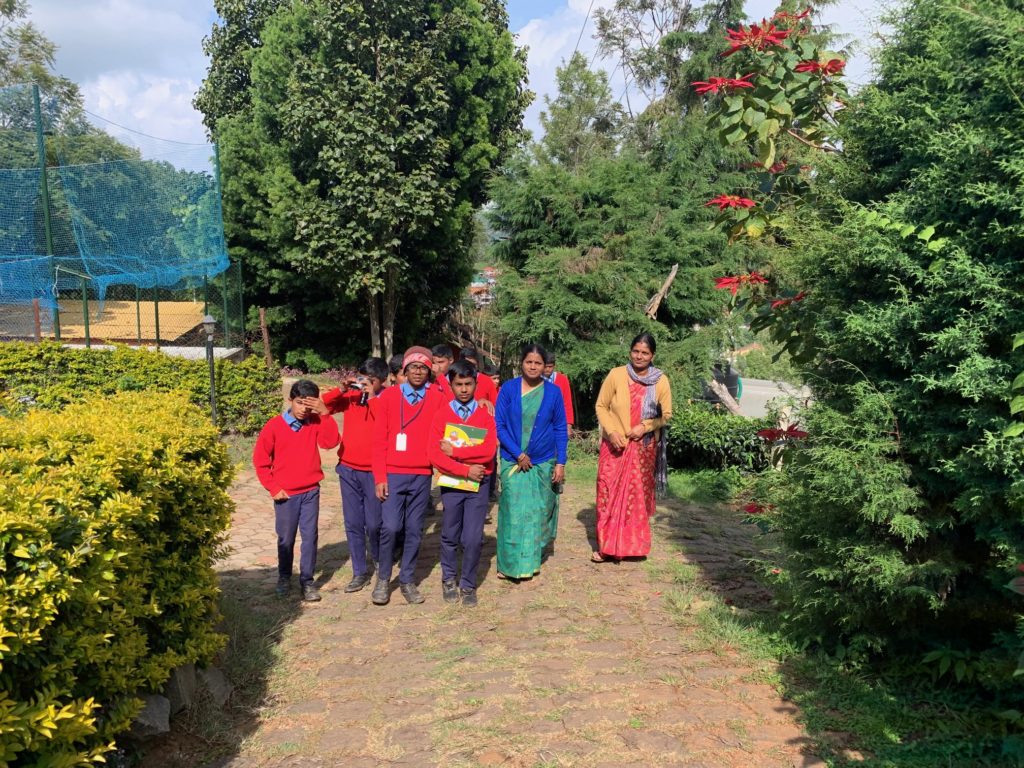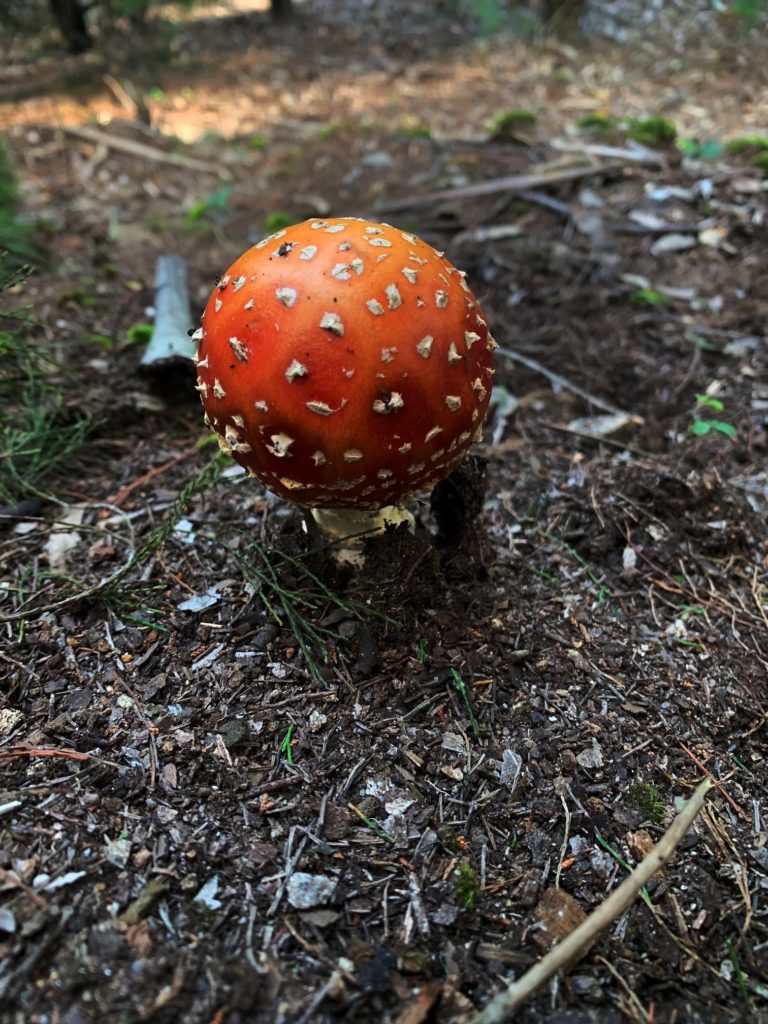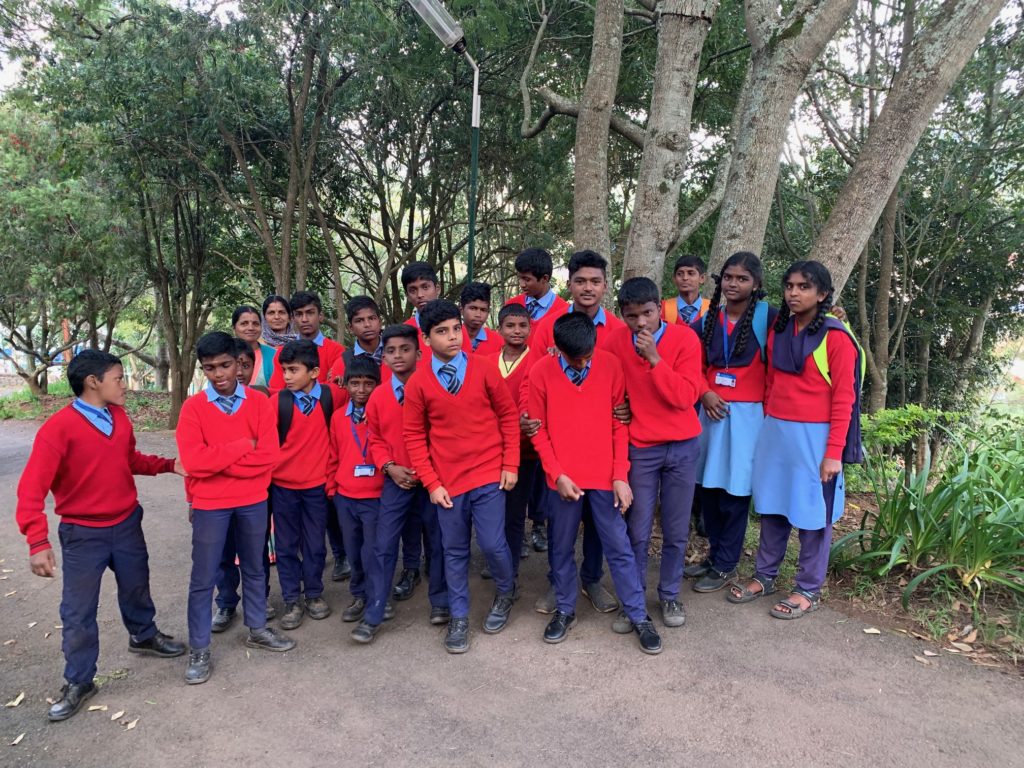On 8th and 13th November, 2019, students of grade 9 from CSI school came in two groups (20 each, section wise) to be initiated into the subtle art of birding. Simple though it sounds, watching birds requires a lot of attention to detail – about the bird, about its environment, about its behavior in order to be able to obtain useful information while enjoying the bird walk.
On 8th, the students gathered around, as Chandrashekar, wildlife photographer and researcher and the NNHS co-ordinator gave the students the low-down of bird watching. We began with the basic ethics and etiquettes of birding – keeping silence, not scaring or disturbing the birds, not playing bird calls and such. We then moved on to what to look for while birding – to look at birds from the 4 points of reference – size (crow, mynah bulbul, sparrow), colours, (wings, supercilium, rump, lore), where they are seen (strata and habitat) and what they are doing (habit and behavior). After this short session, we headed out on a walk around Keystone Campus and the small Eucalyptus plantation behind. On 13th, the same was repeated for the second group of students by the NNHS co-ordinator.
Needless to say, the first lesson they learnt was that it was far more easier to ‘hear’ birds than see the same. And soon the students realized that bird calls could be equally important both in pin pointing where the bird might be located but also to even know which bird it might be. They could hear the shrill and loud ringing cal of the Prinia that goes on, as opposed to the ‘–tch-tch’ short spells of the warbler as it flits within the shrubbery or between branches. The babblers were both loud enough to be heard and visible in the open. The other birds that greeted them In the campus included the flycatchers, blackbirds and bulbuls.
The students were also provided some information of sexual dimorphism in birds, wherein male and female birds show differences in characteristics beyond their sexual organs. Case in point for this was the common pied Bush chat that they observed, where they could clearly see the colour differences between the male and female, as they alternated between flight and perch in the adjacent tea estate. The birds also provided the children insights into their preferred habitats and habits – how warblers were more shy and reclusive hiding inside foliage while bushchats were more bolder and out in the open.
As part of observing the birds, the students also learnt to use the binoculars, as well as observe using naked eyes. During the walk we also got to talking about pine and eucalyptus forests being bereft of undergrowth and managed to spot some amazing fungi as well. As the 2-hour sessions drew to a close, the students were treated to more birds and bird calls including the blue-capped rock thrush, streak throated woodpecker, jungle mynah, long-tailed shrike before posing for photos and calling it a day. In all they were able to record more than 10-15 species (by sight, call or a combination of both) and understood that birding was more than just naming the bird.
(By Sharada Ramadass)

